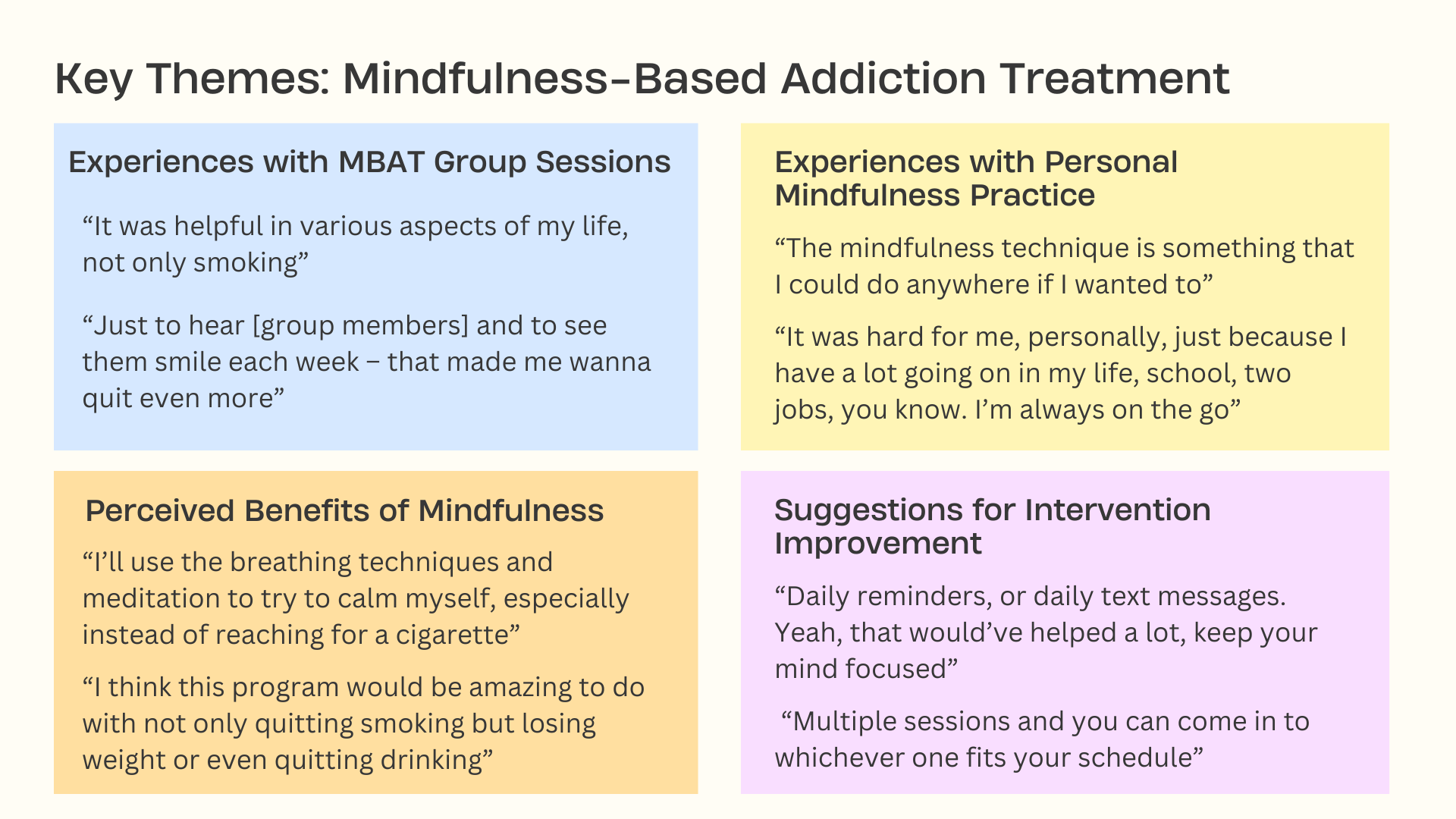Cigarette smoking is one of the most common causes of preventable death in the United States. This harm is not evenly distributed; although African Americans and Whites are equally likely to smoke, African Americans are more likely to die from smoking-related diseases. People with low socioeconomic status are more likely to have tobacco-related health outcomes compared to people with higher socioeconomic status. One promising approach to smoking cessation is mindfulness, which involves increasing awareness of the present moment and developing healthy responses to challenging situations and internal thoughts. Racial minorities and low-income people are underrepresented in most studies of the effectiveness of mindfulness interventions. This week, ASHES reviews a qualitative study by Charlayne Scarlett and colleagues that examined a diverse group of adult smokers’ perceptions of a mindfulness-based addiction treatment designed for smoking cessation.
What was the research question?
How do racially and socioeconomically diverse adult smokers perceive a mindfulness-based treatment program designed for smoking cessation?
What did the researchers do?
The researchers interviewed 28 current smokers aged 18 to 65 after they had completed an 8-week mindfulness-based addiction treatment (MBAT) designed for smoking cessation. Half of the participants identified as African American and over half reported an annual household income below $30,000. MBAT involved teaching participants different mindfulness techniques (e.g., walking meditation and yoga), strategies to increase awareness of the present moment, and tools for relapse prevention. During interviews, the researchers asked participants about their experiences with MBAT and mindfulness and their suggestions to improve MBAT. The researchers used thematic analysis to identify themes in the interview responses.
What did they find?
As the Figure shows, one theme was ‘Experiences with MBAT Group Sessions.’ Overall, participants had positive impressions of the program. They noted that learning mindfulness was helpful beyond smoking cessation and liked that the group atmosphere was welcoming and supportive. Another theme was ‘Experiences with Personal Mindfulness Practice.’ Some participants noted the portability of certain mindfulness techniques, while others indicated that it was difficult to find time to practice on their own and disliked specific practices such as yoga. A third theme was ‘Perceived Benefits of Mindfulness,’ which included managing cravings and smoking triggers, managing stress, and applying mindfulness techniques to other unhealthy habits. Finally, a fourth theme was ‘Suggestions for Intervention Improvement.’ A few suggestions included using text messages and mobile applications to encourage participants to practice more on their own and providing more flexible scheduling and transportation assistance.

Figure. Key themes that the researchers identified and corresponding quotes from participants. Click image to enlarge.
Why do these findings matter?
Participants had generally positive impressions of the MBAT intervention, as it helped them to more effectively manage cravings, smoking triggers, stress, and other unhealthy habits in their lives. This suggests that racial minority and low-income people who are disproportionately affected by tobacco use may benefit from engaging in mindfulness. Many participants alluded to the importance of group-based mindfulness; therefore, it might be important to increase the availability and accessibility of mindfulness classes for marginalized communities by providing flexible scheduling, easy transportation, affordable options, and involving culturally competent mindfulness instructors.
Every study has limitations. What are the limitations in this study?
The sample only included treatment-seeking smokers, so it is unclear whether mindfulness would be as effective for non-treatment-seeking smokers. The researchers also excluded participants with psychiatric disorders; future research should examine the effectiveness of mindfulness on smokers with mental illness since psychiatric comorbidities among smokers are more common compared to the general population.
For more information:
SmokeFree offers tools and tips for quitting and maintaining abstinence from smoking tobacco. The Centers for Disease Control and Prevention also provides research and tips about cigarettes and how to quit. For additional self-help tools, please visit the BASIS Addiction Resources page.
— Annette Siu




